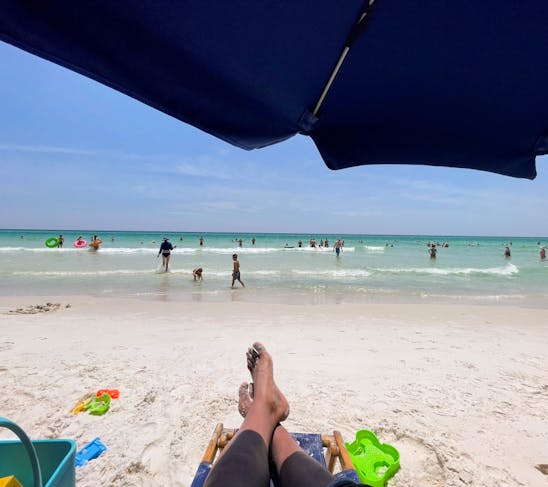It’s 1:30 p.m. on Sunday, June 26, 2016, and I’m lounging in a hammock on little Ranguana Island, one of the many Cayes (pronounced Keys) dotting the Belizean coastline. I finished editing my book yesterday and decided to reward myself by taking an hour boat ride to my own private getaway. The island views are post-card perfect, with coral-rich waters surrounding the sandy beaches in a mix of dark blue and emerald green. Sea turtle nesting sites are revealed by small caution signs that remind passersby like me to tread lightly and avoid leaving behind footprints that can’t be washed away by the incoming tide. This place reminds me all-too-much of Turtle Island from my book, and the relaxing time away in such an idyllic setting is quite the exclamation point to my very own journey in pursuit of the Tree of Life.
To better understand the Tree of Life, known locally as the Ceiba Tree, I headed to Guatemala and to the ancient Maya capital of Tikal for additional insight. Studies of the Maya have confounded researches ever since the mid-16th century when the Spanish destroyed their historical codices, or hieroglyphic books written on paper made from the bark of trees.
Potentially hundreds, if not thousands, of the codices—all but four still in existence today—received an untimely ending as questionable as the events that led to the downfall of the Maya civilization itself. The surviving codices offer a far-too-limited history on the Maya, providing a mere snapshot of a much larger, panoramic view of a civilization that stretched across Central America from southern Mexico to El Salvador.
What the surviving codices do reveal, however, is a sophisticated Maya culture with mathematics and astronomy revolving around its religious center. Theories tend to outweigh the facts as it relates to Maya astronomy, including a recent suggestion proposed earlier this year by a 15-year-old Canadian student that the Maya built their cities based on their alignment to star constellations.

After studying the Madrid Codex, appropriately named for one of the cities that houses one of the four surviving codices, the student linked more than 100 known Maya cities to 22 individual star constellations. Three years later, he noticed something peculiar about constellation number 23: it contained three stars, but there were only two matching Maya cities.
The student’s research led the Canadian Space Agency to reposition its satellites on the proposed area in question, Mexico’s Yucatan Peninsula, where imagery appeared to show manmade structures overgrown by dense jungle. If verified by a future expedition, the student’s hypothesis could lead to the discovery of a lost Maya city with a population rivaling some of the greatest of the empire.
As it stands today, however, most scholars agree that the zenith of the Maya civilization was the city of Tikal, which was occupied as early as 900 BC through 900 AD. Located in northern Guatemala, Tikal National Park and its 200-plus miles of surrounding rainforest received the distinction of a World Heritage Site in 1979 for both its archeological significance and biodiversity.
Tika’s rainforests are home to a hodgepodge of animal and plant life, totaling more than 300 species of birds and 200 species of trees, including one very tall Ceiba Tree welcoming me at the entrance of the park with outstretched arms. I approached its massive root system, part of which extended above ground, looked up at its maze of branches and saw why the Maya held the tree in such high regard.

Marco, my guide, explained that the Maya believed the universe was supported by a giant Ceiba Tree. Its roots, he said, extended below ground through the nine layers of the underworld, while its sprawling branches extended through 13 layers of the upper world.
The more Marco talked, the more I realized the significance, and symbolism, of numbers to the Maya. They created their own math system, including the independent use of the number zero, and developed a complex calendar system based on 365 days. The understanding of time offered them practical insight, such as harvesting cycles, and also provided a religious compass for rituals and divination.
Rather than build Tikal closer to a sustainable water source, Marco said the Maya chose the rainforest highlands strictly for religious purposes and, of course, a better view of the skies. The decision forced the Maya to develop an intricate water system at Tikal, similar to the Roman aqueducts, which included vast inter-connected water reservoirs needed to support its estimated 60,000 to 80,000 inhabitants.
The engineering feats of Tikal also extended above ground into a labyrinth of 4,000 structures, including plazas, palaces and soaring pyramids, the largest of which, Temple IV, reaches a staggering 212 feet into the air. After climbing to the top, I looked out across the lush rainforest canopy, saw similar limestone summits in the distance and allowed my eyes to absorb the splendor of Tikal from the highest point in the park.
Temple IV is also known as the “Temple of the Two-Headed Serpent” after a lintel was found inside with a picture of a throne resting atop a two-headed snake. The image is believed to represent the Maya god named Kukulkán, or Quetzalcoatl, who is depicted as a snake adorned with the iridescent feathers of the Resplendent Quetzal—a breathtaking bird with a serpentine tail that extends as long as three feet in length.

So sacred was the quetzal to the Maya that killing one was punishable by death. Its jade feathers were more valuable than gold, and Maya kings were said to have worn flowing headdresses decorated with the ornate feathers of the now-endangered quetzal.
To illustrate the importance of the quetzal to the Maya, Marco said that the pyramids in Tikal, as well as others found throughout the ancient civilization, share a special acoustic feature. He said Tikal is often called the “City of Voices” and proceeded to clap his hands along the base of the pyramid, triggering a distinct echo that sounded oddly-familiar to a bird’s chirp.
I shook my head in disbelief and asked Marco to clap again. Sure enough, to my astonishment, I heard the same chirp a second time. Marco suggested the pyramid steps were designed in such a way for the structures to mimic the natural sounds of the quetzal.
Before we departed the park, I took a moment to savor the sights and sounds of the rainforest, all the while wondering about the unsolved mysteries surrounding the Maya. Needless to say, my adventure to Tikal was one I won’t soon forget. Not only did I find the Tree of Life, but I just may have found the inspiration for a new bird character in a future novel!
Follow me on Instagram at @Joshua_Maven or @HonchotheVan, on Twitter @MaventheRaven or Facebook at Facebook/TheLastImperial.
* Sources - National Geographic, National Geographic, USA Today, Ancient History Encyclopedia, Ancient History Encyclopedia, Smithsonian.com, Smithsonian National Museum of the American Indian, History.com
Postcards to Samuel
It's 8:00 p.m. on Wednesday, July 31, 2024, and I'm trying something a little different with this post. Instead of my usual blog format, I compiled a series of postcards that I wrote to my 10-month-old son, Samuel, during a two-week road trip I recently took to the Great Lakes. I plan to give him these postcards, along with others from future trips, when he's older in hopes that they will inspire him to chase his own dreams, whatever those might be.

False Summit
It’s 12:00 p.m. on Sunday, July 30, 2023, and I’m lounging at the beach enjoying the white sands and green waters of Florida’s Emerald Coast. Today is my 40th birthday and a relaxing getaway is exactly what I needed after a two-week road trip out west, where I hiked the highest peaks of Colorado and Arizona. The reasoning behind my latest excursion was simple: if I’m going to be “over the hill,” then I might as well be standing on top of a mountain.

Recharged
It’s 2:00 p.m. on Friday, Sept. 16, 2022, and I’m resting inside Honcho—my van—at the Taos Ski Valley Resort after successfully hiking Wheeler Peak, New Mexico’s highest point. I made the long drive west for a much-needed mental health getaway in nature. That, and it was a good excuse for me to test a new house battery I had installed the week before. Needless to say, my lungs and legs are physically exhausted after my 13,000-foot climb this morning, but the satisfaction that comes from summiting another mountain is just the feeling I was looking for.

